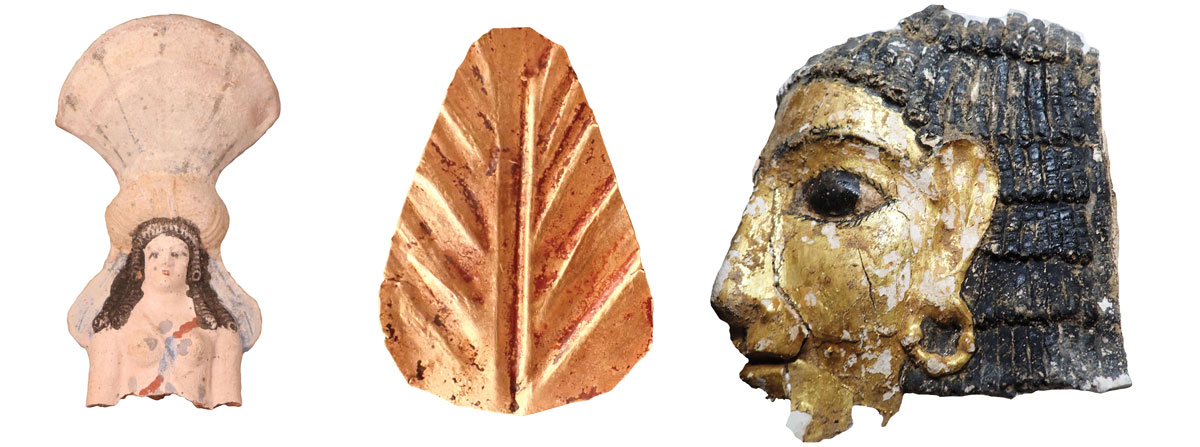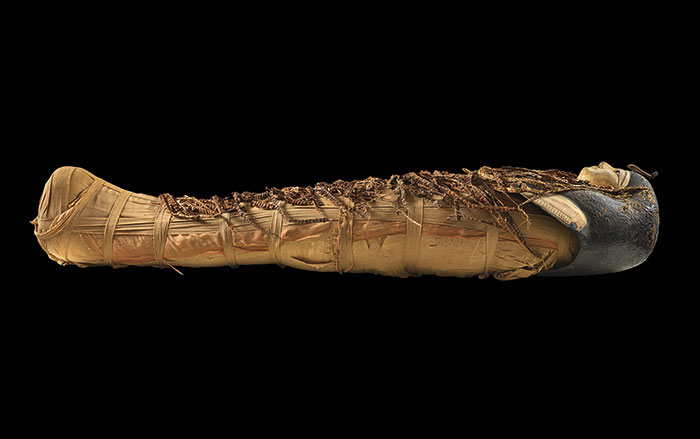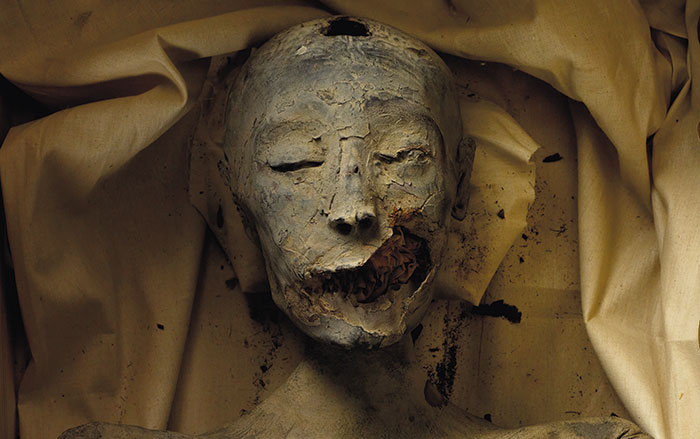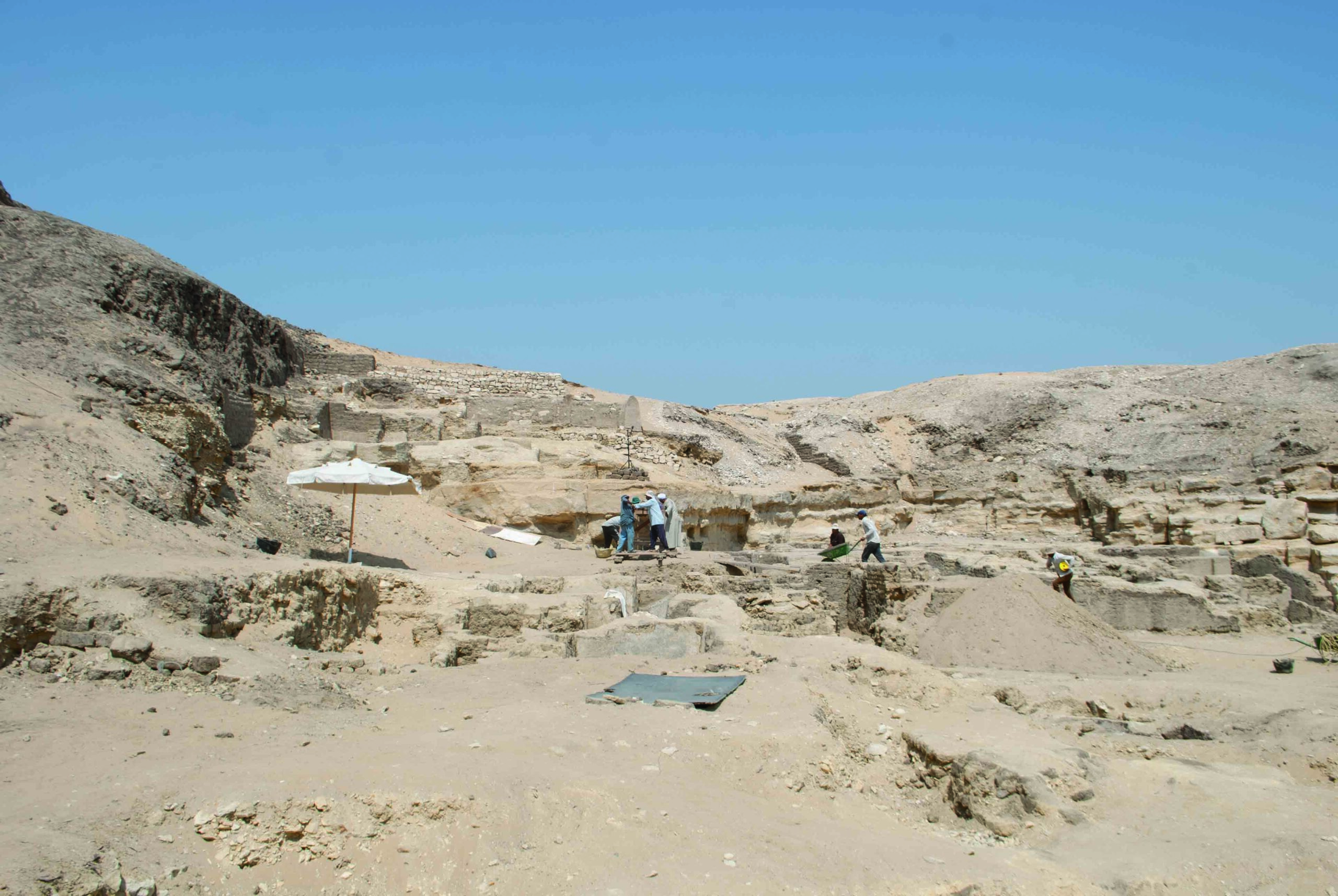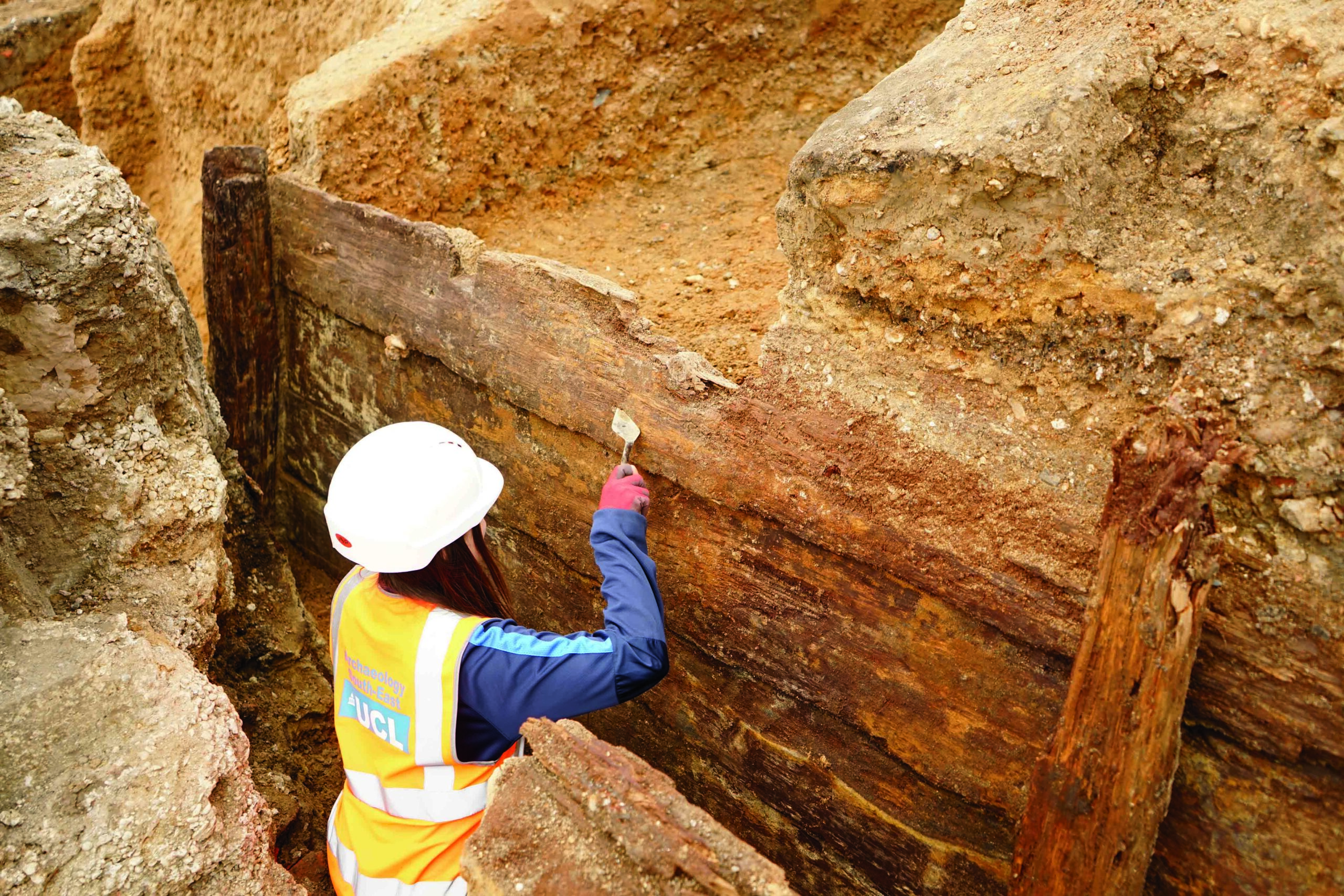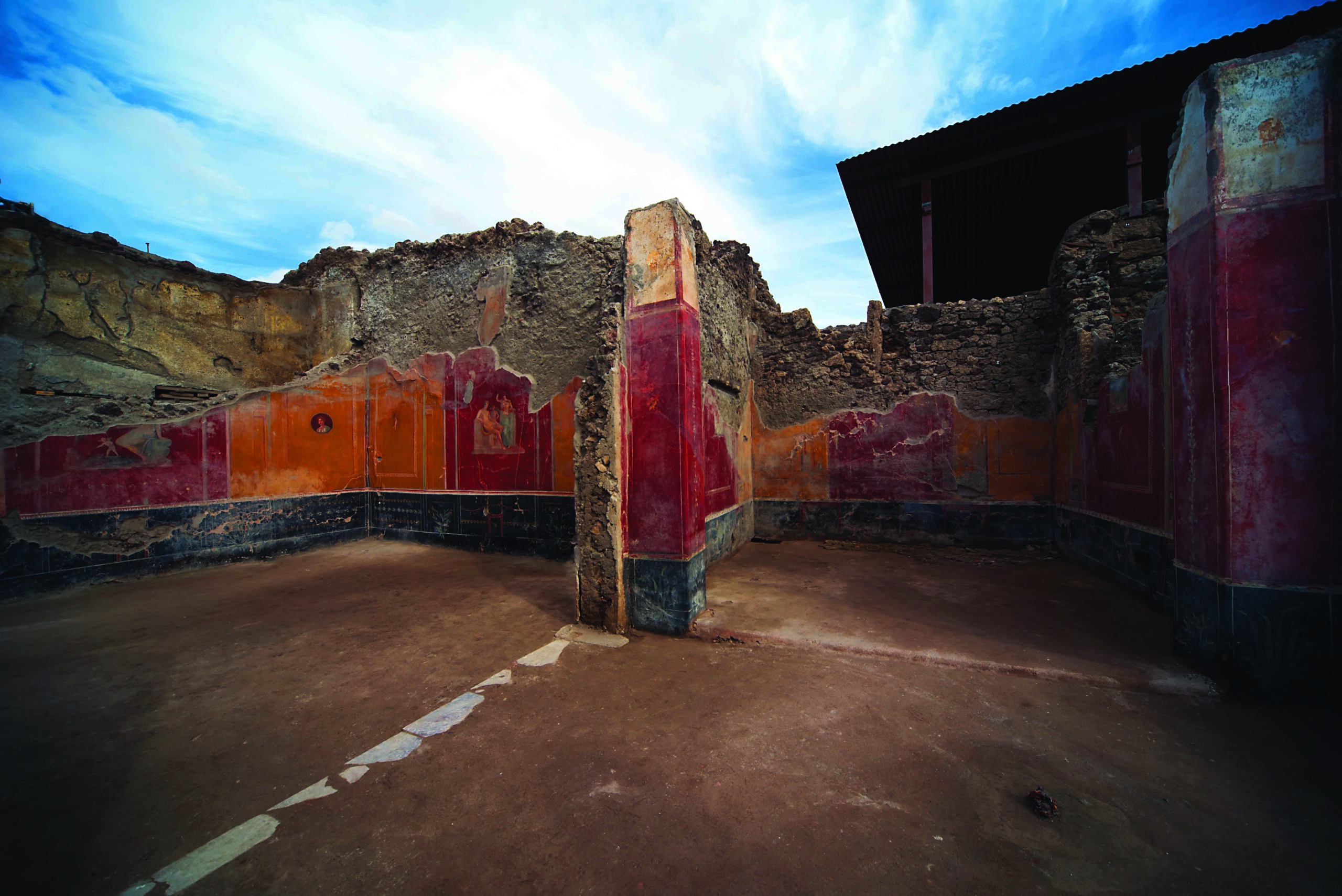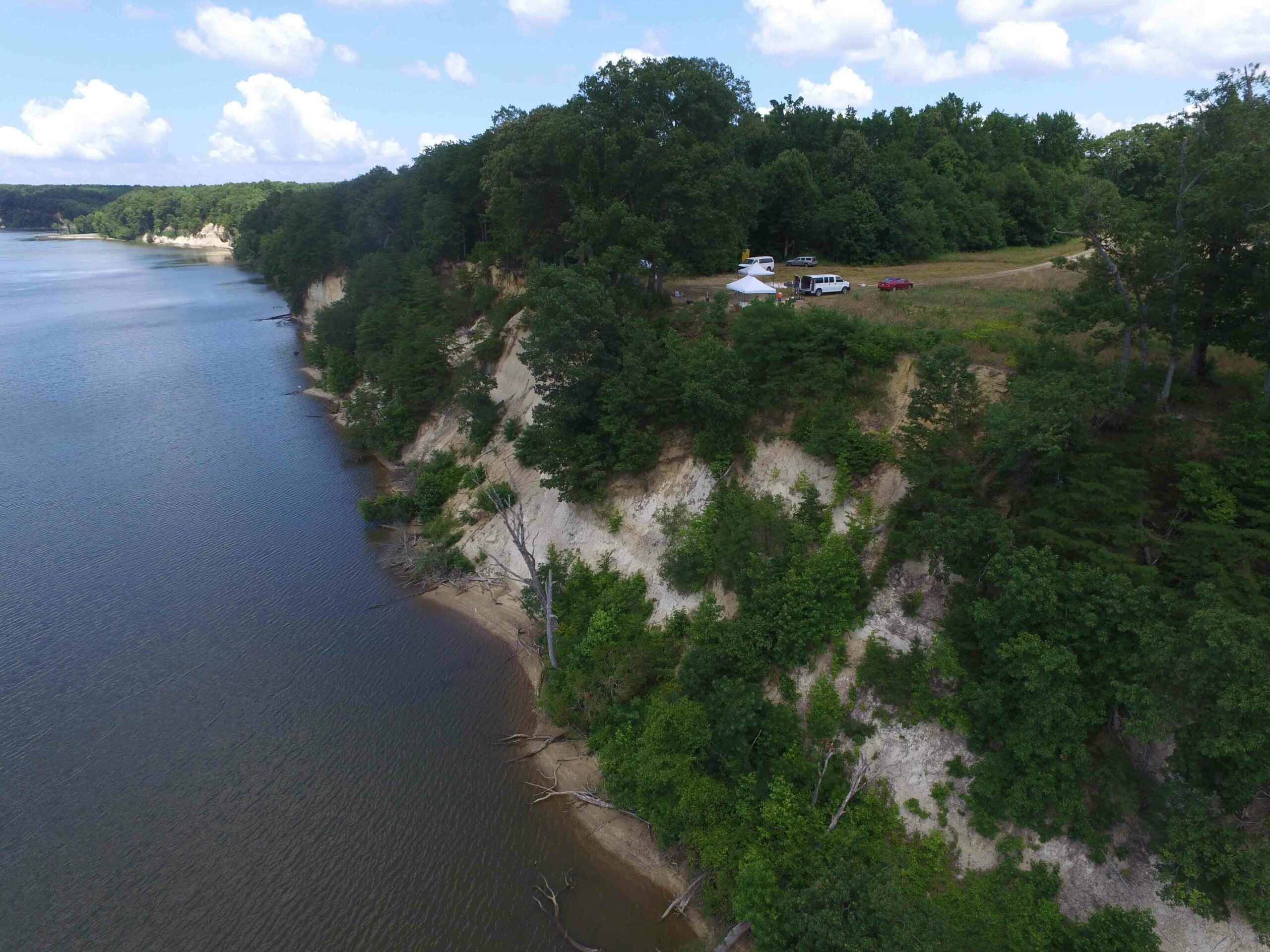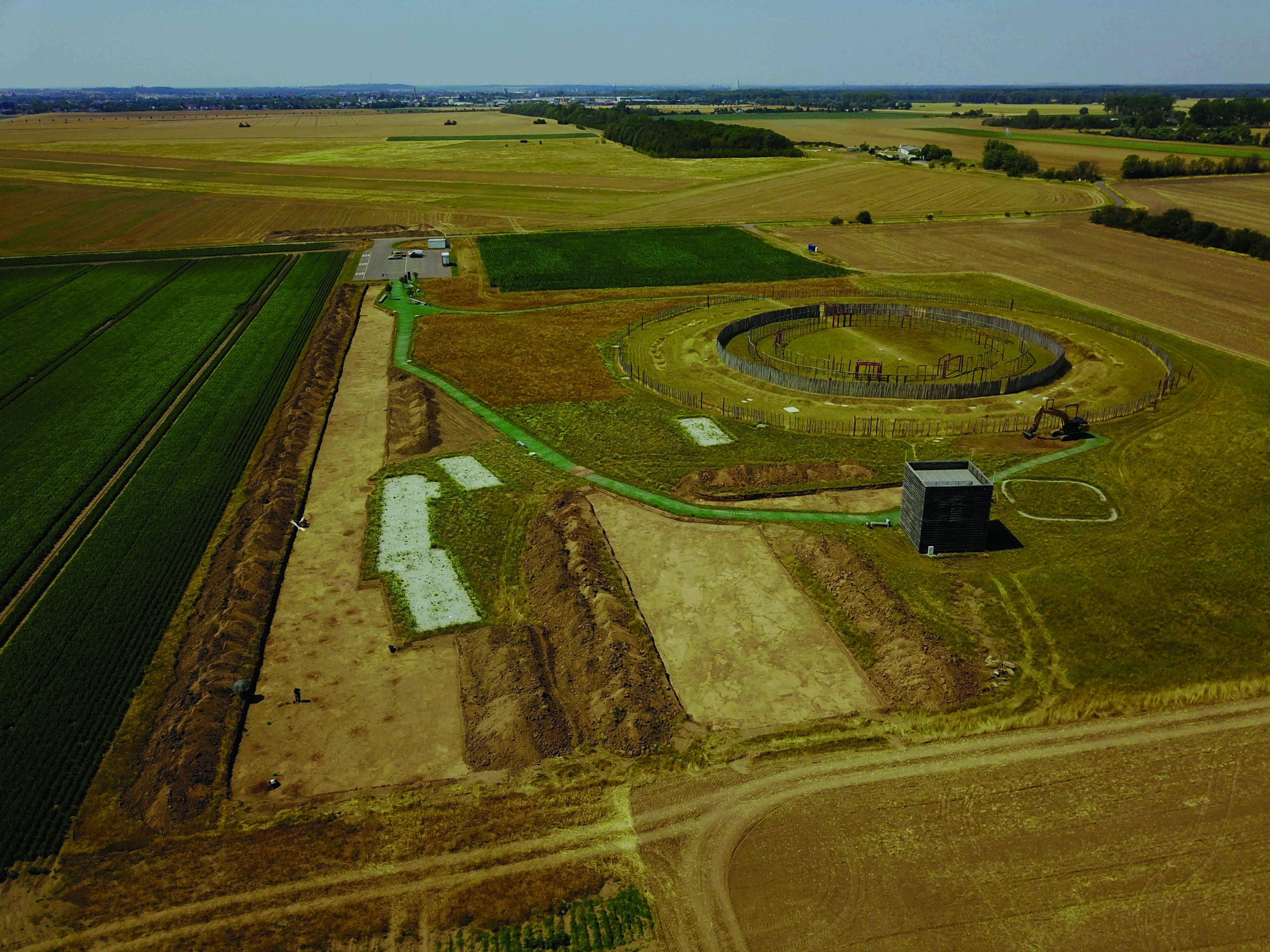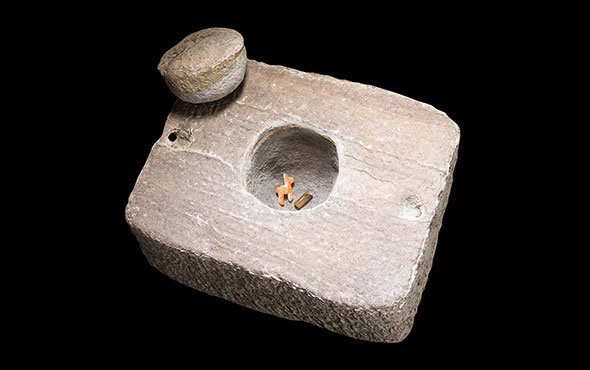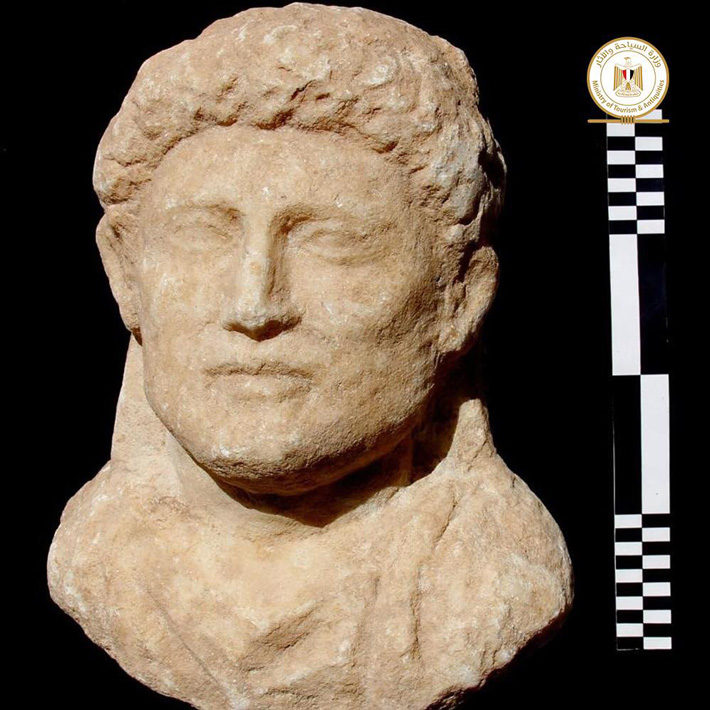
ALEXANDRIA, EGYPT—According to a BBC News report, 16 burials have been found in rock-cut tombs at Taposiris Magna, an archaeological site near Egypt’s Mediterranean Sea coast, by a team of researchers led by Kathleen Martinez of Santo Domingo University. All of the poorly preserved mummies found in the tombs, she explained, were oriented towards the Osiris temple constructed by Ptolemy IV, who ruled from 222 to 205 B.C. Some of them had been equipped with gold tongues, perhaps to give them the power of speech in the afterlife. One of the mummies, dated to the end of the Ptolemaic period, was covered with a layer of cartonnage decorated with gold and an image of Osiris, god of the dead, the afterlife, and resurrection. He is often depicted with mummy-wrapped legs. A second mummy was adorned with the atef crown worn by Osiris, gilded horns, and a cobra on its forehead. It also wore a falcon-headed collar, and a gold pectoral ornament. A woman’s funerary mask, eight flakes from a golden wreath, and marble portrait sculptures dated to the end of the first century B.C. were also recovered from the burials. To read about underwater excavations at an ancient port city that predated Alexandria's rise, go to "Egypt's Temple Town."


